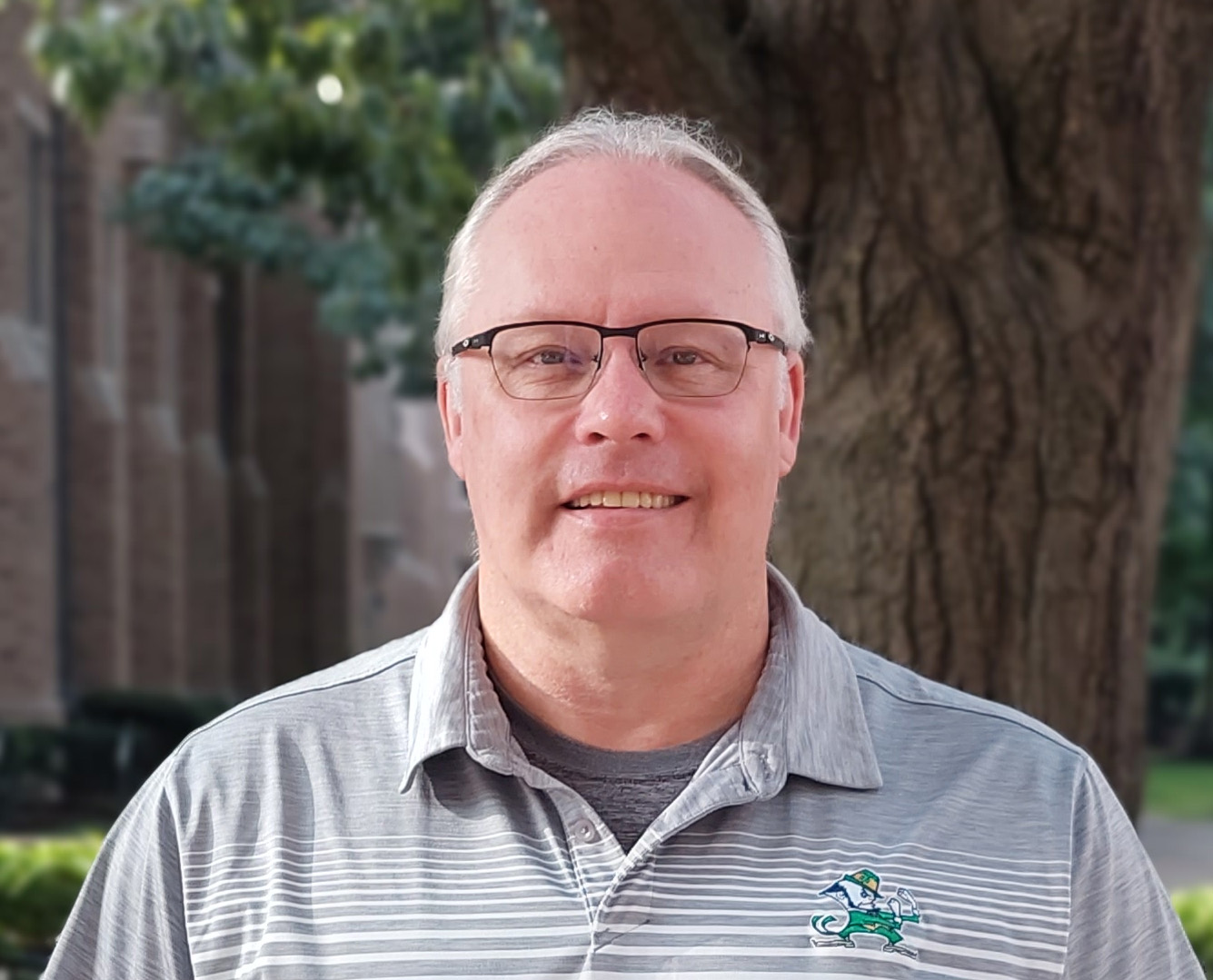 Education Education
B.Sc. Chemistry, (1992), M.Sc. Chemistry (1994), Ph.D. Chemistry (2000) University of Waikato, New Zealand. Post-doctoral Scholar, UC Berkeley (2000-2002).
Professional Activities
Research Professor, University of Notre Dame; Co-editor for Acta Crystallogr. C (2011-present); ACA Member since 2001; Chair Small Molecule (2005), Service (2006), and General Interest (2008, 2012); Secretary Small Molecule (2007-2008), General Interest (2016-2017); Communications Committee (2008-2011); Education Committee (2019-2022); Co-Program Chair 2013 (Hawai’i); Pittsburgh Diffraction Society Member (2003-present); Secretary Pittsburgh Diffraction Society (2003-2007, 2017-present); Host and co-organizer of the ACA Summer Course in Chemical Crystallography (2012-2019); co-organizer ACA Summer Course (2022-present).
Research Interests
Structural elucidation of inorganic, organometallic, and organic small molecules. Facilities management. Crystallographic education and outreach.
Statement
I am honored to be nominated for Vice President of the ACA. I consider it a mark of respect from the entire crystallographic community. I joined the ACA as a post-doctoral fellow and attended my first meeting in Los Angeles in 2001 where I presented in the Cool Structures session (a session that encourages younger scientists to present their work). I was introduced to many crystallographers and it was very apparent that the entire community is exceptionally close, no matter the size of molecules studied. These early interactions led me to serve on various SIG and committee positions, and connections developed within the ACA have continued to grow. More recently, I have expanded my educational roles serving as an instructor and/or co-organizer for the ACA Summer Course in Chemical Crystallography and on the Education Committee.
The community within the ACA strives and succeeds to be inclusive. We welcome colleagues new and old, at any career stage, well-established or newly-minted faculty or researchers, and most importantly, students and postdocs just discovering the joy and wonder of crystallography. We are all aware of the challenges of attracting new members and retaining long-term members. This is one goal that many presidents in the ACA have pursued and I intend to continue building on that. Expanding the ACA’s mandate to be The Structural Science Society includes welcoming and fostering new and emerging fields in structural science, most notably Electron Diffraction and Microscopy techniques.
One challenge is to differentiate ourselves and encourage researchers who may not consider themselves to be crystallographers or structural scientists to join ACA. In addition, we must seek ways to bring those who have stepped away to return and present their findings. Several options have been discussed in recent years, however two main avenues that come to mind are (1) revisiting topics that have had previous broad appeal, and (2) conference accessibility. We all know having members propose and chair sessions is a challenge. The YSIG has made an admirable effort to have its members co-chair sessions, paired with a more experienced member. I will continue to promote this practice. It is an excellent way to have junior scientists develop the organizational skills and connections needed to keep the association moving forward.
Meeting accessibility is another critical topic. With the resumption of in-person conferences, and the ability to reconnect with friends and colleagues, provisions for meeting access must be made for those who are unable to attend, as well as those present in-person. Many members are unable to attend due to rising costs associated with the conference and daily life. I will seek ways to make the conference more viable as a fully-hybrid program. We have all become accustomed to virtual meetings and the technology exists to make the entire conference available as a hybrid that would supplement the main meeting. Furthermore, the archiving of talks and sessions can be readily accomplished by simply recording the virtual session. This would be of benefit to both the Crystallographic Literacy Portal and The ACA History Portal, and ultimately, the wider community. I also envision developing a monthly or bi-monthly virtual symposium that could assist in reconnecting members with the association. Many organizations and journal publishers have such events in place that are highly successful. The ACA should act on this and encourage current, lapsed, and prospective members to present their research in this way.
Tied closely to meeting accessibility is location and registration costs. I will endeavor to seek ways to reduce meeting costs to the attendees, while maintaining the excellent cohort of staff at ACA Headquarters. Utilization of second-tier cities that can readily accommodate our annual meeting and/or to provide broader housing options to cater to all society members. I am aware of the challenges that this may pose; however, meeting location and costs are particularly sensitive, highly-discussed topics by the membership that must be addressed.
Passing on knowledge, given to me by the previous generation of crystallographers, to the next generation of structural scientists, is my passion. Crystallography is a wonderful science, why not share that excitement with others? Our passion for our science should come through in all that we do. Thus, I intend to continue building the Crystallographic Literacy Portal. The ad hoc committee has already made progress on developing the necessary website for the dissemination of crystallographic knowledge. It is now at the point where it can, and will, grow.
Lastly, and certainly not least, IUCr 2026 will be held in Calgary, Canada, and is a joint ACA/IUCr venture. The ACA is committed financially and many current members and staff are heavily involved with its organization. As ACA Vice President, I will support their work in whatever way I am able. This is a significant opportunity for all ACA members to contribute and demonstrate our community on the international stage.
In all of the ACA projects I have been involved in thus far, I have strived to make positive changes for the society. To paraphrase a statement in 2017, this association is family. I will endeavor to continue to support and grow this family should I be elected as Vice President of the ACA.
|